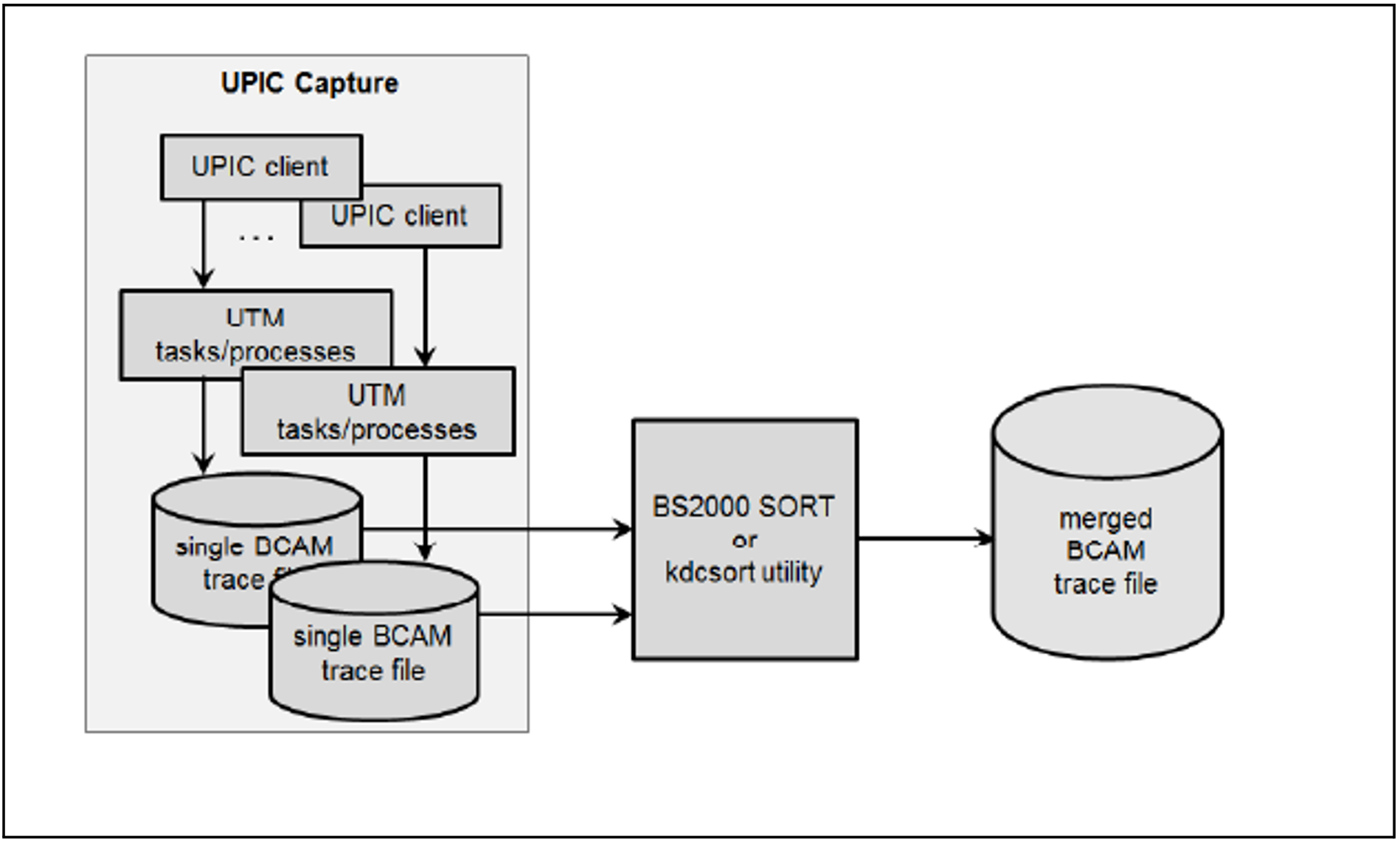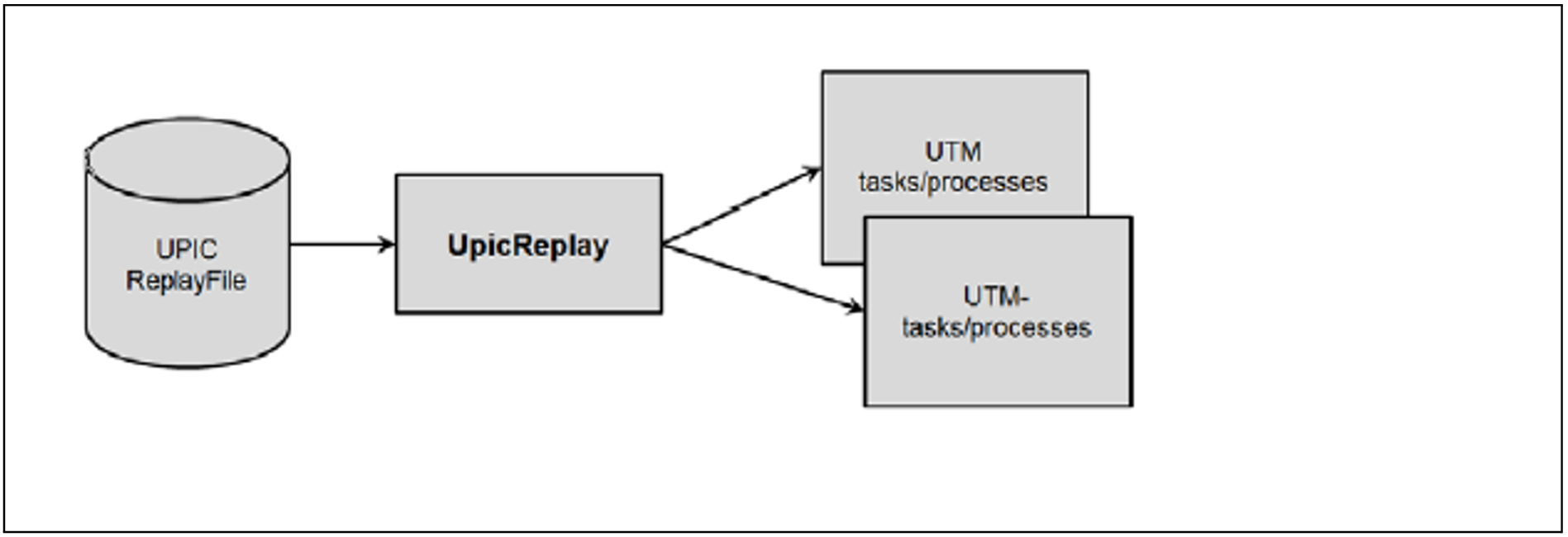Thanks to the Workload Capture & Replay function, it is possible to record UTM application communications with UPIC clients and then replay these in combination with adjustable load profiles. In this way, it is possible to test the behavior of the UTM application at high loads under real-life conditions.
Workload Capture & Replay consists of the following components:
UPIC Capture: Records communication with the UPIC client.
The trace function BTRACE (BCAM trace), which is present on all the server platforms, is used to record UPIC sessions.
It may then also be necessary to merge the traces.
UPIC Analyzer: Used to analyze the recorded communication.
Analysis is performed using the program UPICAnalyzer which is supplied with UPIC on 64-bit Linux systems.
UPIC Replay: Used to replay the recorded UPIC session with different load parameters (speed, number of clients).
This is done using the program UPICReplay which is supplied with UPIC on 64-bit Linux systems.
The version of the UpicReplay program can only process input files which have been created using the same version of the UpicAnalyzer program.
You perform the following steps to run the Workload Capture & Replay function:
Enable the BCAM trace and start UPIC communication, see section "Recording the UPIC conversation (UPIC Capture)".
Stop the BCAM trace and merge the BCAM trace entries in a trace file (if necessary), see section "Merging trace entries".
These two steps are illustrated in the figure below.
Perform a binary transfer of the trace file to the 64-bit Linux system where you have installed UPIC. Please note that you have to transfer the file by means of openFT.
Create a UPIC ReplayFile on the 64-bit Linux system on which the UPIC client is installed. To do this, call the program UpicAnalyzer with the trace file as input file, see the figure. For details, see section "Preparing data using the program UpicAnalyzer".
Start the program
UpicReplay with the UPIC ReplayFile as the input file, see the figure. For details, see section "Replaying the UPIC session using the program UpicReplay".



